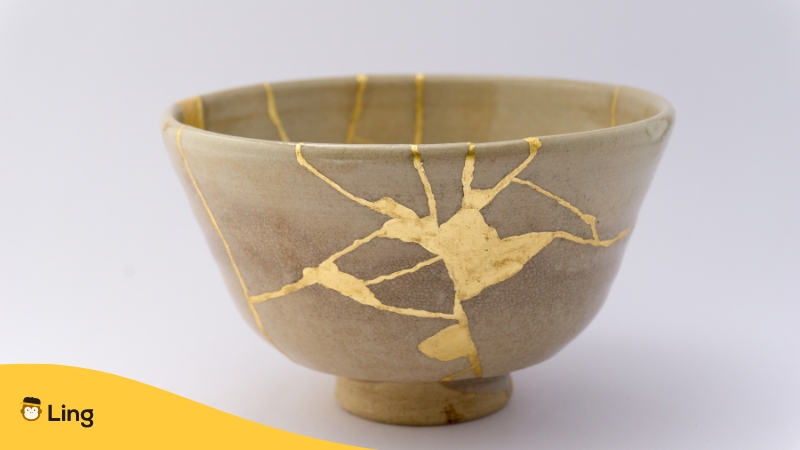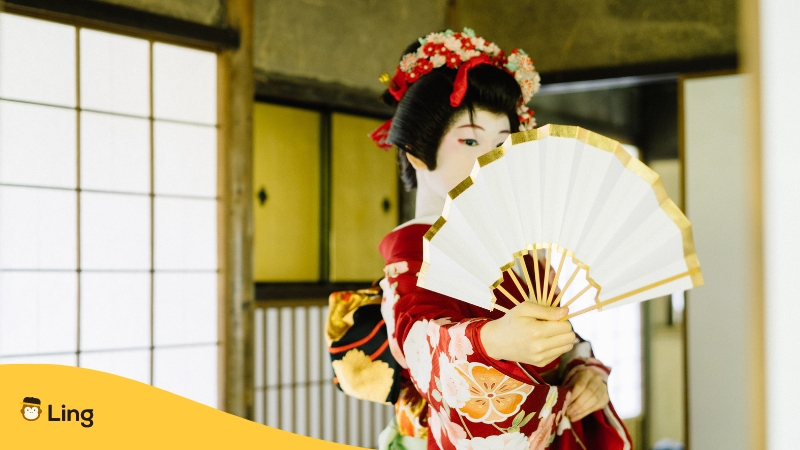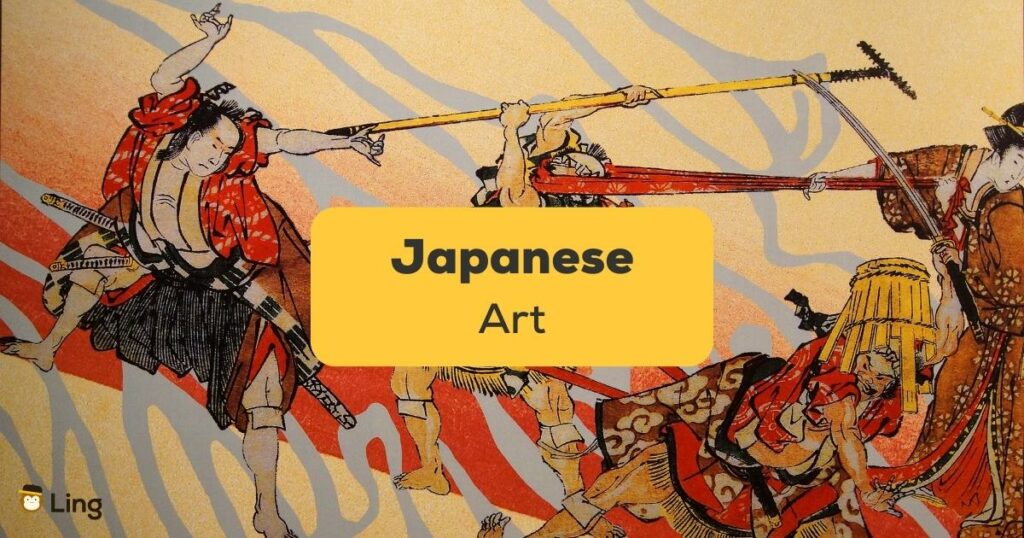Japan is a fantastic place for Japanese art enthusiasts. It’s like an ocean of incredible creativity because there’s so much to discover!
If you love exploring the amazing country of Japan, then you’ll definitely be captivated by its beautiful art. It’ll make you want to keep going back repeatedly, as Japanese art styles are incredibly fascinating, from traditional to contemporary. In addition, they can tell us so much about Japanese culture.
Talking about Japanese culture, have you ever experienced the Japanese tradition of drinking matcha tea? Seeing the host use gorgeous ceramic matcha bowls to create a delicious and flavorful tea for their guests is a beautiful sight.
Interestingly, even if you accidentally drop a piece of pottery, they can turn it into a work of art by repairing it, so-called 金継ぎ (Kintsugi). Oh my! Isn’t that amazing?
I’m excited to take you on a tour of some of Japan’s most beautiful art in this post. Alright, let’s dive in!
What Is Japanese Art Known For?
Japan has a rich artistic history that includes everything from pottery to paintings on hanging scrolls, folding fans, sliding doors art, calligraphy, woodblock prints, and timber-frame buildings that mimic their natural surroundings.
Let’s check out some fabulous and one-of-a-kind Japanese art pieces that will amaze us!
Pottery – 陶磁器 (Toujiki)
Japan’s pottery is really famous globally! But did you know it’s not just the matcha bowl you see in green tea commercials or at tea ceremonies? Every one of Japan’s 47 prefectures has unique ceramic pottery!
Names Of Japan’s Pottery In Each Prefecture
- 上野焼 (Agano-yaki) – Fukuoka pottery is famous for elegant, lightweight ware.
- 赤津焼 (Akazu-yaki) – Aichi pottery is one of the oldest forms of Japanese ceramics. It dates back to the Kofun period (300-538).
- 会津本郷焼 (Aizu-Hongo-yaki) – Fukushima ceramic is a fusion of Western and traditional Japanese paints.
- 天草陶磁器 (Amakusa-tojiki) – Kumamoto traditional pottery is well-known for a characteristic minimal texture.
- 備前焼 (Bizen-yaki) – Traditional and rustic ceramics from Okayama.
- 越前焼 (Echizen-yaki) – Ceramics from Fukui that became popular all around Japan.
- 萩焼 (Hagi-yaki) – Yamaguchi ceramic is famous for its deep clay cracks.
- 波佐見焼 (Hasami-yaki) – Nagasaki ceramic, famous for blue gosu enamel, adds a touch of elegance to classic white porcelain and clear indigo ceramics.
- 出石焼 (Izushi-yaki) – Hyogo pottery of a very brilliant white hue.
- 唐津焼 (Karatsu-yaki) – Pottery from Saga and Nagasaki exemplifies the wabi-sabi aesthetic of simple and imperfect beauty.
- 清水焼 (Kiyomizu-yaki) – Made in Kiyomizu, Kyoto, and has a tricolor design.
- 大谷焼 (Otani-yaki) – Tokushima’s pottery made with local red clay.
- 丹波立杭焼 (Tamba-Tachikui-yaki) – Hyogo ceramics get their signature color during the sixty-hour firing process.
- 壺屋焼 (Tsuboya-yaki) – Okinawan ceramics became famous for its folk art features.

Golden Joinery – 金継ぎ (Kintsugi)
As we mentioned in the beginning about the broken Japanese ceramics restoration technique. They use a special lacquer called 漆 (urushi) to join and fill in cracks and chips in the ceramic.
And get this, they sprinkle gold powder on top to finish it. For the name, 金 (kin) means gold, and 継ぎ (tsugi) means repairing. So, if they use silver powder instead of gold powder, it’s called 銀継ぎ (gin-tsugi).
Also, if they use colored Urushi lacquer for the completion, they call it 漆継ぎ (urushi-tsugi).
Japanese Ink Wash Painting – 水墨画 (Suibokuga)
Most Japanese art historians say that many art elements in East Asian countries have influenced each other. It makes sense, don’t you think?
It’s like how a style of Japanese paintings, or Nihonga, shares a similar painting technique to Chinese culture, focusing on the beauty of brush strokes. And to craft this type of art, they use a brush, inkstick, Xuan paper, and inkstone.
Did you know that the technique of using a brush in Japanese ink painting is also used to write the alphabet? It’s impressive to see how skilled Japanese artists are with a brush!
Here, I’ve got a list of some really cool Japanese ink-wash paintings that I’d love to share with you!
Most Recognizable Japanese Painting
- The Pine Trees by Hasegawa Tōhaku
- Fishing in Spring Time by Ike no Taiga
Woodblock Prints – 版画 (Kenga)
Japanese woodblock printing, also known as 浮世絵 (ukiyo-e), has its roots in ancient China. It was later introduced to Japan after the country was unified and Shogunate rule came to power. So they’ve been around for centuries and became super popular in the capital city of Edo (1600) or now Tokyo.
I’m sure you’ve come across some of this type of Japanese painting at least once. Want to know what it is? Read below!
Famous Japanese Artist And Their Works
- The Great Wave off Kanagawa (1830) by Hokusai
- The Plum Garden at Kameido Shrine (1857) by Utagawa Hiroshige
- Taka to Ama, the Dream of the Fisherman’s Wife (1814) by Katsushika Hokusai
- The Teahouse Waitress Takashima Ohisa (1790) by Katsukawa Shunchō
- The Beloved Wife’s Particolored Reins (1794) by Tōshūsai Sharaku
- Evening Glow at Ryōgoku Bridge (1782) by Torii Kiyonaga

Folding-Fan – 扇子 (Sensu)
Japanese folding fans are made of paper glued onto a wooden frame. They’re convenient because they’re small and light enough to fold and slip into your pocket.
Additionally, the most fascinating aspect of it is displaying unique paintings. Japanese folding fans are not just for cooling down when opening them up to create a gentle breeze, but they also make incredible decorations for your home!
Japanese Sliding Door/Screen – 襖 (Fusuma)
Have you noticed that many J-dramas feature those beautiful Shoji-style sliding doors? Those are sliding outer partition doors and windows. They’re made of a wooden frame with a lattice structure design and covered with strong, see-through white paper. The Japanese architects designed it to diffuse light throughout the house when closed.
Besides the Shoji style, which is simple, there is a more advanced artistic technique called “fusuma.” The Japanese-style house or Ryokan uses it as a partition between rooms and a screen to showcase beautiful Japanese art, such as paintings.
This amazing Japanese art style can transform and add vibrant energy to your interior and exterior space!
In Summary
Wow, that’s amazing! It’s pretty remarkable how many Japanese artists there are. They keep churning impressive work that blows people away, both in Japan and worldwide.
Traditional Japanese art is beautiful and shows how rich Japanese history is. Learning about Japanese art will teach you much about their culture, the people, and the talented artists in that era.
Besides the history of Japanese art, did you know you can improve your Japanese skills quickly and easily with the Ling app? Give it a try and see for yourself!
Learn Japanese With Ling
The Ling app is superb for learning Japanese! It has many resources to help you improve your vocabulary and learn daily phrases for any situation.
If you’re new to learning Japanese or have been at it for a while, I highly recommend checking out the Ling app. It’s a fantastic tool that offers a variety of features like games and an intelligent chatbot to help you enjoyably improve your skills!
Join the rest of the Japanese learners who have chosen Ling as their companion! Download the Ling app from Google Play Store or App Store for FREE today. Get ready to be fluent in Japanese soon!


































































